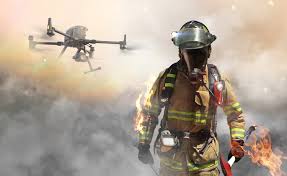For decades, firefighting have used certain substances to extinguish fires caused by flammable liquids and gases. This is a fire extinguisher known as aqueous film-forming foam (AFFF). The foam was first used in 1966 and has proven very useful in fighting Class B fires caused by fuels such as gasoline, alcohol, jet fuel, varnish and petroleum compounds. However, this fire extinguishing agent hides dark secrets that pose serious dangers to both the environment and human health. The AFFF formulation contains a number of highly toxic elements known as PFAS (“persistent chemicals”). Let’s understand the potential risks associated with these constant chemicals and look for alternatives. This article will take you through the world of firefighting foam, from government alternatives to plaintiffs’ lawsuits.
Always chemicals = always complications
PFAS, perfluoroalkyl and polyfluoroalkyl substances, account for 50% to 98% of foam compositions. The risks associated with PFAS exposure are varied and of serious concern. The potential consequences of exposure to these “forever chemicals” are numerous and serious, the Maryland Reporter reports. These range from an increased risk of kidney, prostate and testicular cancer to thyroid disease, infertility and liver damage.
High cholesterol, kidney disease and preeclampsia also join this list. AFFF’s lawsuit comes in response to an increasing number of illnesses caused by firefighting foam. As of June 2024, a total of 8,240 claims have been filed. These cases were combined into an MDL, according to DrugWatch. Defendants in this lawsuit include AFFF manufacturers, including Tyco Fire Products, DuPont and 3M. Tyco Fire Products has reached a $750 million settlement under the ThorHerman Act. Approved by a South Carolina federal judge. In addition, 3M is believed to have reached an agreement worth $12.5 billion. DuPont and Corteva have reached a new agreement worth $1.2 billion.
Replacements urgently needed

2023 marks the beginning of a new era of innovative and environmentally friendly firefighting solutions. As the world faces environmental challenges, moving from AFFF to diverse alternatives holds the promise of a safer, greener future. These alternatives not only help fight fires, but they also help protect the planet for future generations. Let’s look at some.
Fluoride free form (F3):
One of the most environmentally friendly alternatives to AFFF is fluorine-free foam, also known as F3. No fluorinated surfactants are used in the production of these foams. Therefore, the probability of environmental contamination and health problems is significantly reduced. F3 foam has demonstrated superior firefighting properties, effectively extinguishing Class B fires. Fire departments around the world use F3 foam, which represents the next generation of environmentally friendly firefighting.
Water mist system
Water mist systems have completely changed the way fires are extinguished by harnessing the power of tiny water droplets. Due to the small size of water droplets, this method is very effective in extinguishing fires. This is because there is a large surface area to absorb heat. The water mist system is adjustable and can be used to fight Class A, B, C and K fires. It quickly reduces the temperature of an enclosed space such as a building, removes oxygen and extinguishes the fire very quickly. The precision and versatility of water mist systems make them indispensable in firefighting applications.
Compressed air foaming system
firefighting, This system, also known as CAFS, combines water, foaming agent and air. Produces a thicker, denser foam solution than traditional systems. This unique configuration allows CAFS to effectively extinguish Class A and Class B fires. With its rapid cooling and superior surface adhesion, CAFS is now the best choice for building fire suppression. The combination of these properties represents an important advance in firefighting techniques.

Frequently asked questions (FAQ)
Where are PFAS chemicals found?
PFAS chemicals are found in a variety of products and materials, including firefighting foam, nonstick cookware, waterproof clothing, stain-resistant fabrics, and food packaging.
What are the possible sources of PFAS contamination in drinking water?
Potential sources of PFAS contamination in drinking water include industrial sites, wastewater treatment plants, landfills, and places where firefighting foam has been used, such as military firing ranges and airports.
How can I reduce my exposure to PFAS chemicals?
You can reduce your exposure to PFAS chemicals by using alternatives to products that contain these chemicals, filtering your drinking water with activated carbon filters or reverse osmosis systems, and following specific guidelines and procedures provided by your local health authority. You may want to consider following the recommendations.
Are there regulations limiting the use of PFAS?
Regulations regarding PFAS chemicals vary by country and region. Some countries have restricted the use of certain PFAS chemicals, while others have developed or are considering regulations. Governments, regulators and industry are taking steps to combat PFAS contamination. These actions include monitoring and testing for PFAS in the water supply, establishing guidelines and standards for PFAS levels, implementing remediation strategies, and researching safer alternatives to PFAS chemicals. If you suspect PFAS contamination in your area, we recommend that you contact your local health or environmental authority. The authorities will provide you with advice, carry out investigations and inform you of possible risks and the measures to be taken.










